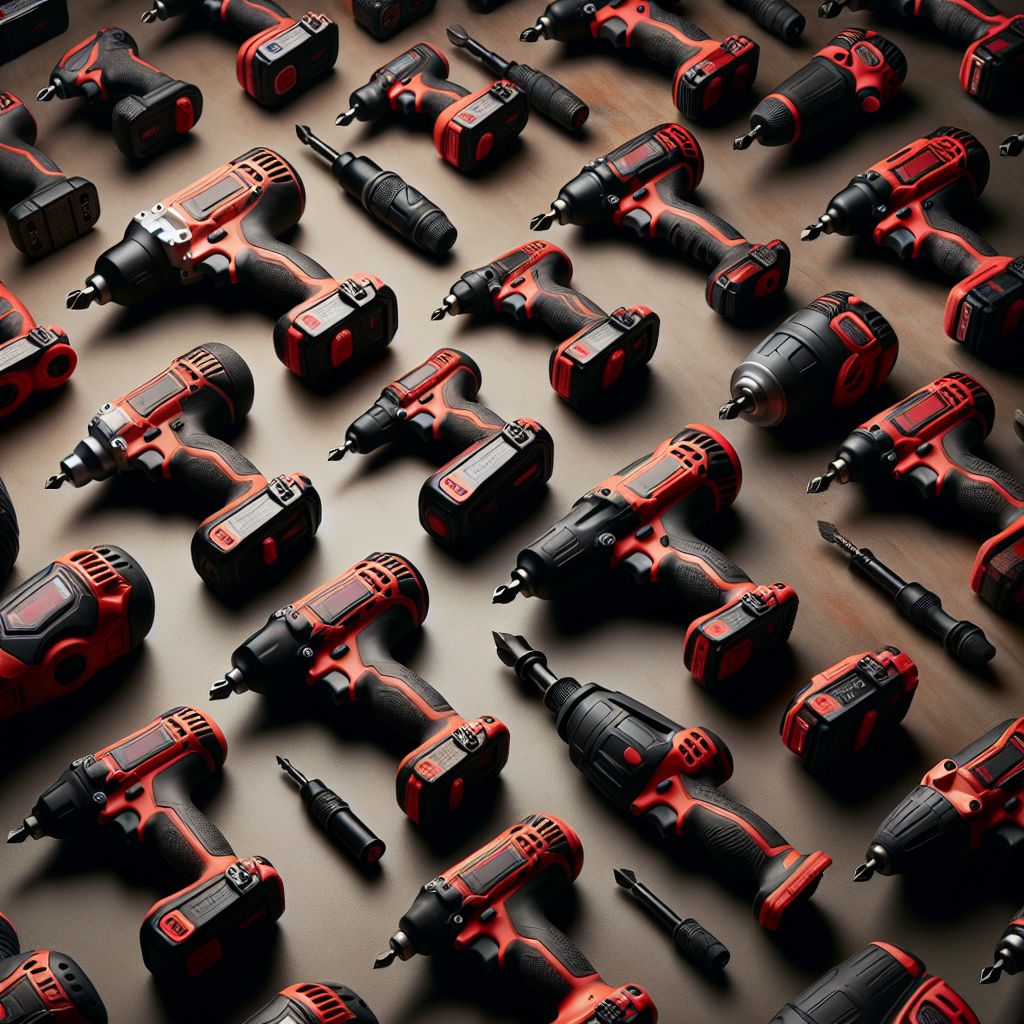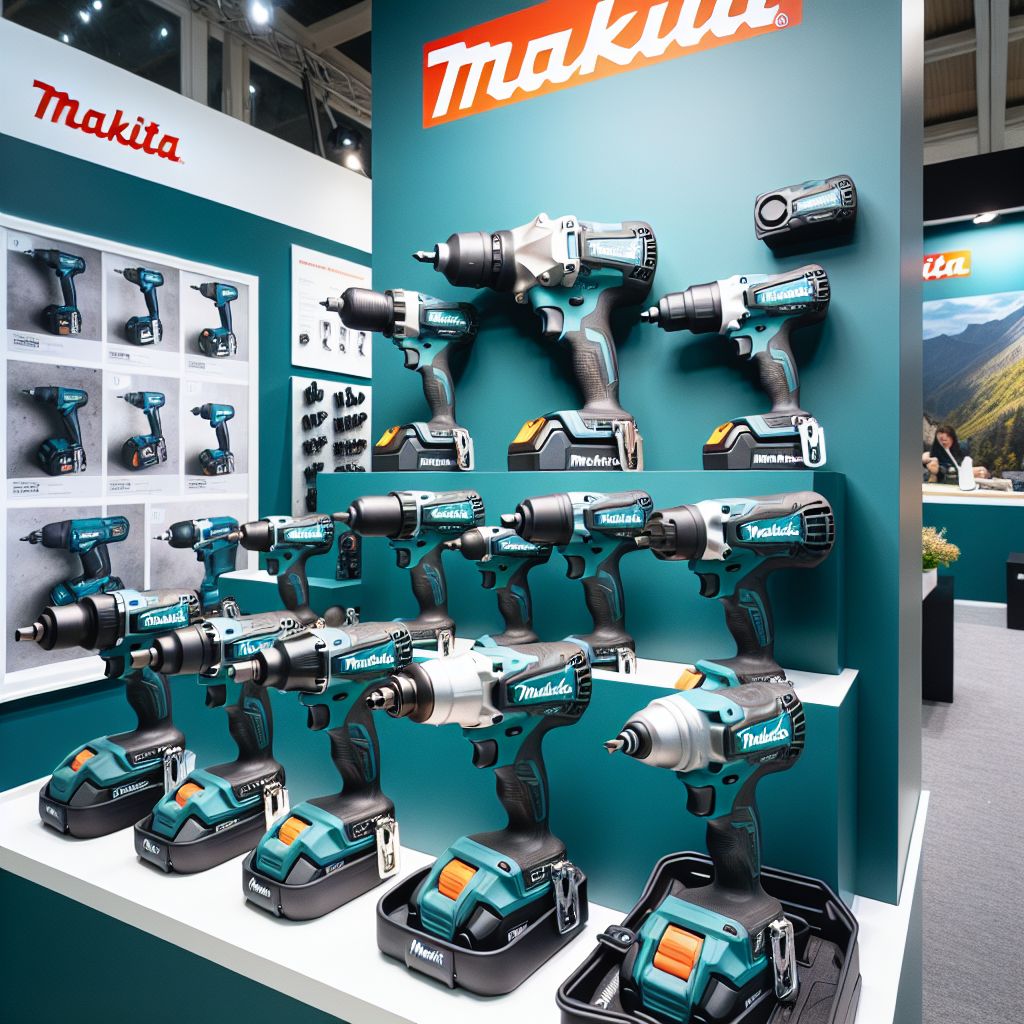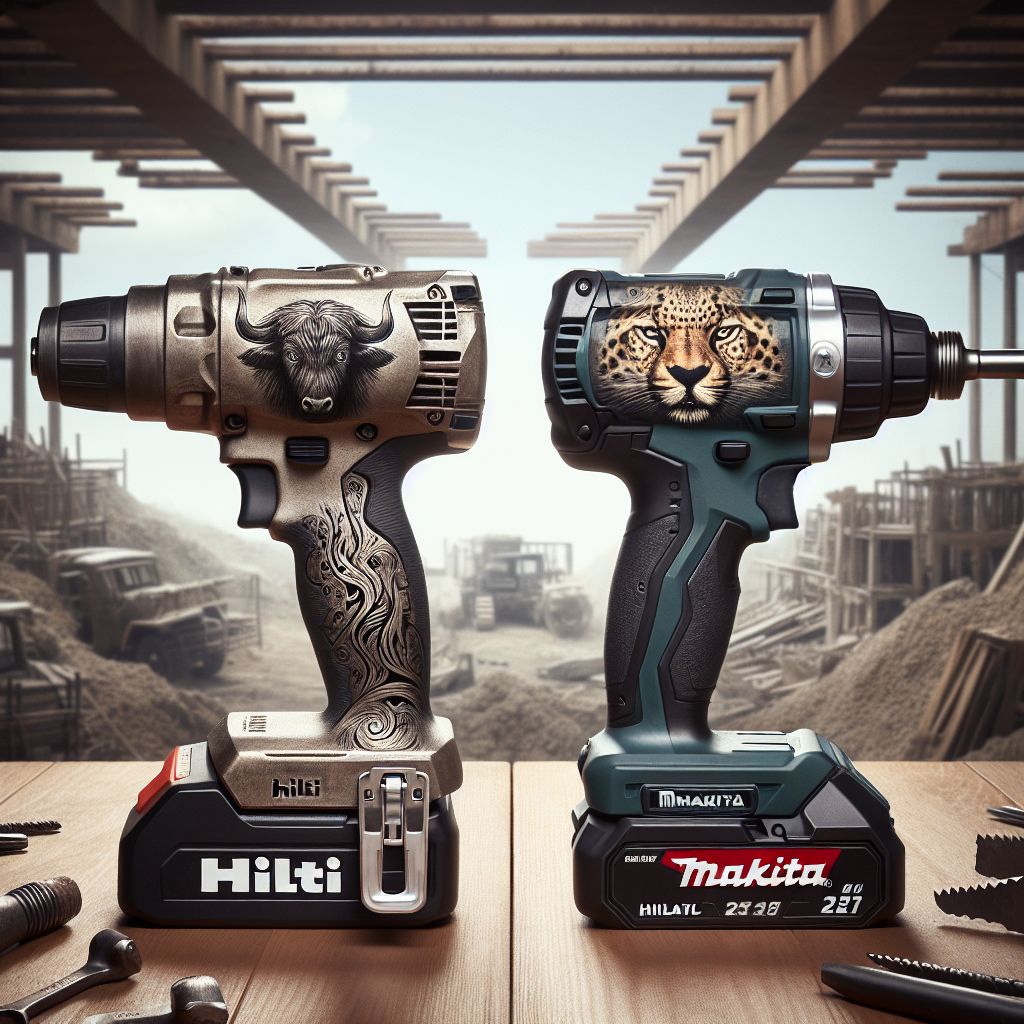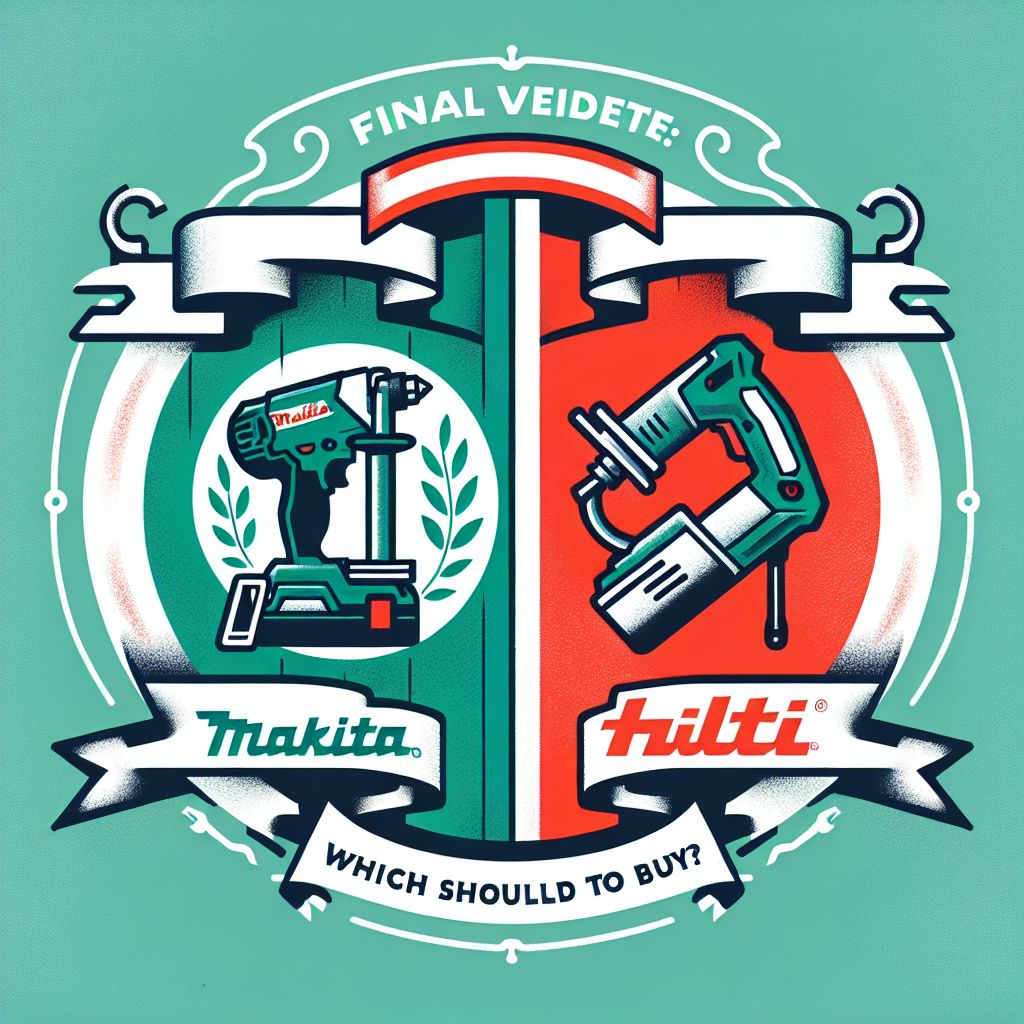When it comes to power tools, choosing the right impact driver is crucial for both efficiency and effectiveness on the job. Whether you’re a seasoned professional or a weekend warrior in the world of DIY, the impact driver you select can make all the difference. Let’s dive into the world of Hilti and Makita impact drivers and see how they stack up against each other.
Key Takeaways
-
Hilti impact drivers are known for their durability and advanced technology, ideal for heavy-duty tasks.
-
Makita impact drivers offer versatility and excellent battery life, making them suitable for a range of projects.
-
Both brands provide a variety of models to cater to different needs and preferences.
-
Comparing torque, battery efficiency, and design will help you decide which impact driver is best for you.
-
Understanding the long-term value and customer service can influence your purchasing decision.
Choosing the Right Impact Driver for Your Needs

Finding the perfect impact driver means considering what you’ll use it for. Are you assembling furniture, building a deck, or perhaps working on automotive repairs? The right tool will not only fit the task at hand but also feel right in your grip. It should be powerful enough to tackle tough jobs but not so heavy that it wears you out.
Hilti Impact Driver Advantages
When it comes to sheer power and endurance, Hilti impact drivers are tough to beat. Known for their robust build, they can take on the most demanding tasks without breaking a sweat. Here’s why you might lean towards Hilti:
-
Advanced technology ensures high performance for challenging projects.
-
Durable design means they can withstand the rigors of the jobsite.
-
Specialized models are available for specific heavy-duty applications.
Most importantly, Hilti’s commitment to innovation means their tools often include features that enhance productivity and safety, like active torque control and ultra-efficient batteries.
Makita Impact Driver Advantages
Makita, on the other hand, is celebrated for its user-friendly design and long battery life. If you’re working on a project that requires agility and precision, here’s why Makita might be your go-to:
-
Versatile tools that can handle a variety of tasks with ease.
-
Excellent ergonomics to reduce fatigue during extended use.
-
Long-lasting batteries that keep you working longer between charges.
Because of these features, Makita impact drivers are often favored by those who need a reliable tool that’s easy to handle, especially for jobs that require finesse rather than brute force.

Hilti’s Impact Driver Lineup
Hilti’s lineup of impact drivers is impressive, offering a range of options for different levels of work. From compact models that are perfect for tight spaces to powerful drivers designed for construction-grade tasks, Hilti has an impact driver for almost every job.
Overview of Hilti Models and Features
Let’s break down Hilti’s offerings:
-
The SID 4-A22 is a compact tool that doesn’t skimp on power, perfect for general contracting.
-
For more demanding tasks, the SID 8-A22 offers higher torque and battery performance.
-
The SIW 6AT-A22 with its active torque control is a beast for heavy-duty applications.
Each model boasts features like brushless motors and advanced battery technology, which provide longer run times and help maintain power throughout the battery’s charge.
Key Technologies and Innovations from Hilti
Hilti’s impact drivers are not just about raw power; they’re smart, too. With innovations like Active Torque Control (ATC) to prevent over-tightening and kickback, and Active Vibration Reduction (AVR) to minimize the strain on your hands and arms, Hilti tools are designed to work hard and smart.
Therefore, if you’re frequently tackling projects that demand high performance and precision, Hilti’s technological edge can be a real game-changer.

Makita’s Impact Driver Offerings
Switching gears to Makita, you’ll find a lineup that emphasizes not only power but also versatility and convenience. Makita impact drivers are known for their compact size and innovative features that appeal to a broad audience.
A Glance at Makita Models and Their Capabilities
Here’s a snapshot of what Makita brings to the table:
-
The XDT16Z offers quick-shift mode for increased fastening control.
-
The XDT14Z is known for its tight precision and efficient brushless motor.
-
For those looking for a balance of power and size, the XDT13Z hits the sweet spot.
With Makita, you’re getting tools that are easy to handle, yet powerful enough to meet the demands of most projects. Plus, their fast-charging batteries mean less downtime and more productivity.
Makita’s Unique Impact Technology
Makita’s impact drivers stand out with their proprietary technology. For example, their brushless motors optimize battery energy use for up to 50% longer run time per charge. Besides that, features like the Assist Mode (A-mode) help drive screws with precision, reducing stripping and cross-threading.
And let’s not forget Makita’s Extreme Protection Technology (XPT), which provides increased dust and water resistance for operation in harsh job site conditions.
Stay tuned for the next part of our in-depth comparison, where we’ll pit Hilti against Makita in a performance battle, scrutinize their design and durability, and explore the customer experience each brand offers.

Performance Battle: Hilti vs. Makita
When you’re drilling and driving, performance is key. Both Hilti and Makita have reputations for excellence, but how do they really compare when put to the test?
Torque and Power Comparison
Torque is the measure of the force that causes an object to rotate. In the case of impact drivers, more torque means more turning power. Hilti drivers typically pack a punch with higher torque settings, which is essential for driving screws into dense materials without stripping the head. Makita drivers, while they may offer slightly less torque, compensate with precision and speed control, which is just as important for ensuring that your work is not only fast but also accurate.
Battery Life and Efficiency Showdown
Now, let’s talk battery life. You don’t want to be in the middle of a job when your tool gives out. Makita’s LXT Lithium-Ion battery technology is designed for fast charge times and longer run times. Hilti’s batteries are no slouch either; they’re known for their CPC (Cordless Power Care) technology, which optimizes power use and increases battery life. It’s a close race, but for projects requiring longer, uninterrupted work periods, Makita’s efficient charging system might just edge out the competition.
But battery life isn’t just about how long you can use your tool before recharging. It’s also about the overall lifespan of the battery itself. Hilti and Makita both offer advanced battery technology that resists overheating and overloading, ensuring that the battery not only lasts longer on the job but also has a longer life overall.
Design and Durability: Which Brand Stands Out?
Power tools need to be tough. They’re going to get dropped, knocked around, and exposed to dust and moisture. Both Hilti and Makita build their impact drivers to last, but they each have their own approach to durability.
Ergonomic Features for Prolonged Use
Ergonomics is about more than just comfort; it’s about safety and productivity. A tool that’s designed to fit comfortably in your hand with controls that are easy to operate can make a big difference in how you work. Makita’s ergonomic designs are known for their balance and light weight, which can reduce fatigue during long projects. Hilti’s tools are often heavier, but they’re balanced in such a way as to minimize strain on your wrist and arm.
Build Quality and Material Comparison
Hilti’s impact drivers are encased in a durable material that’s designed to withstand the harsh conditions of a construction site. Makita also uses high-quality materials, with added features like Extreme Protection Technology for increased dust and water resistance. Both brands offer LED lights for improved visibility, but Hilti’s may be positioned to give a better view of your work area without casting shadows.

Customer Experience and After-Sales Service
What happens after the purchase is just as important as the tool’s performance. Both Hilti and Makita have strong reputations for customer service and support, but there are differences worth noting.
Warranty and Repair Services
Hilti offers an impressive 20-year limited warranty, which includes two years of wear and tear coverage, along with a one-day repair turnaround time. Makita’s warranty is typically for three years, and while they also offer repair services, their turnaround time can vary. If the warranty and repair service are important to you, Hilti’s offer might sway your decision.
“Hilti’s 20-year limited warranty and one-day repair turnaround time offer peace of mind and show the company’s confidence in their tools’ durability.”
Additionally, Hilti’s fleet management program provides a unique service where you can pay a monthly fee to cover all tool, service, and repair costs, ensuring that your tools are always in top condition without any unexpected expenses.
User-Friendly Aspects and Support
When it comes to user-friendliness, both brands offer comprehensive support. Hilti’s website provides a wealth of information, including user manuals, FAQs, and instructional videos. Makita also offers extensive resources online, as well as a community forum where users can share tips and advice. The choice between the two may come down to personal preference or the specific type of support you’re looking for.
Value for Money: Analyzing the Investment
Let’s talk about the bottom line: cost. Both Hilti and Makita offer a range of impact drivers at different price points, but the initial cost isn’t the only factor to consider.
Initial Price Point Analysis
Hilti’s impact drivers tend to be at a higher price point compared to Makita. However, the investment may be justified by the tool’s longevity, warranty, and repair services. Makita offers a more budget-friendly range, with a solid build and reliable performance that provides excellent value for money.
Long-Term Cost Savings
Considering long-term costs, think about the efficiency and durability of the tool. A cheaper tool that needs to be replaced more often or that leads to downtime due to battery charging may end up costing more in the long run. In contrast, a more expensive tool that lasts longer and maintains consistent performance can save money over time.
Remember, when it comes to power tools, you often get what you pay for. Investing in a quality impact driver from a reputable brand like Hilti or Makita can lead to better performance, fewer interruptions, and ultimately, a more successful project.
In the next part of this review, we’ll look at which impact drivers are best for specific projects and provide a final verdict on which brand you should consider for your next purchase.
So, which brand should you lean towards for your next impact driver purchase? It’s not just about the specs; it’s about what fits your work style and the tasks you have at hand.

Final Verdict: Which Brand Should You Buy?
After a detailed comparison, it’s clear that both Hilti and Makita have their strengths and cater to different needs. Your choice should be informed by the type of projects you undertake, the frequency of use, and the importance you place on factors like battery life, ergonomics, and customer service.
Deciding Based on Your Specific Needs
-
If you’re involved in heavy-duty construction work, Hilti’s robust build and advanced technology might be more up your alley.
-
For home DIY projects or if you need a tool that’s easy to handle, Makita’s lighter design and longer battery life will serve you well.
-
Consider the warranty and after-sales service as part of your investment. Hilti’s comprehensive coverage could be the deciding factor for peace of mind.
Remember, the best impact driver for you is one that not only performs well but also feels right in your hands and suits your workflow.
Now, it’s time to make your decision. Consider what you value most: Is it the long-term durability and service from Hilti, or the user-friendly design and cost-effectiveness of Makita? Weigh your options and choose the tool that will empower you to achieve the best results in your projects.
Before you go, here’s a final tip: No matter which brand you choose, always buy from an authorized dealer to ensure you get the genuine product with the full manufacturer’s warranty. And most importantly, don’t forget to consider the special offer from HighLevel, where you can start your 14-day free trial today and elevate your marketing and sales with their all-in-one platform!
Recommendations for Different User Demographics
For the DIY enthusiast working on home improvement projects, Makita’s user-friendly tools are an excellent choice. Their ease of use and affordability make them accessible to beginners and seasoned DIYers alike.
Professionals who require tools for more demanding tasks, such as construction or heavy manufacturing, will find Hilti’s performance and durability to be indispensable. The investment in Hilti’s technology and service can lead to increased productivity and fewer tool replacements.
Can either of these impact drivers be used for automotive work?
Yes, both Hilti and Makita impact drivers can be used for automotive work, but it’s important to choose the right model for the job. For example, a compact model with variable speed control would be ideal for precision tasks, while a more robust model with higher torque would be better suited for loosening and tightening lug nuts.
“For automotive enthusiasts, Makita’s precision and control can be particularly beneficial when working with delicate components, while Hilti’s torque is perfect for heavy-duty tasks.”
However, if you’re frequently working on cars, you might want to consider an impact wrench, which is specifically designed for high-torque automotive applications.
How does the weight of Hilti and Makita impact drivers compare?
Hilti impact drivers are generally built for durability and may be heavier, which could lead to more fatigue over long periods of use. Makita impact drivers are designed with ergonomics in mind, often being lighter and easier to handle, especially when working overhead or in tight spaces.
What kind of battery systems do Hilti and Makita use?
Both brands use lithium-ion battery technology, but with different proprietary systems. Hilti’s CPC technology focuses on power management for longer run times, while Makita’s LXT system is designed for fast charging and extended battery life.
These systems are not cross-compatible, so you’ll need to use the batteries and chargers designed for your specific brand and model of impact driver.
Are Hilti and Makita impact drivers compatible with bits from other brands?
Generally, yes. Most impact drivers, including those from Hilti and Makita, use a standard hex chuck that accepts bits from various manufacturers. However, always check the specifications of your tool to ensure compatibility.
What is the average lifespan of these impact drivers under regular use?
With proper maintenance and care, both Hilti and Makita impact drivers can last for many years. The lifespan will depend on how often you use the tool and the conditions it’s used in, but both brands are known for their longevity and robust construction.
As we wrap up this comprehensive review, remember that the right impact driver is out there waiting for you. Consider your projects, prioritize your needs, and make an informed decision that will enhance your DIY or professional work. Good luck, and happy building!
